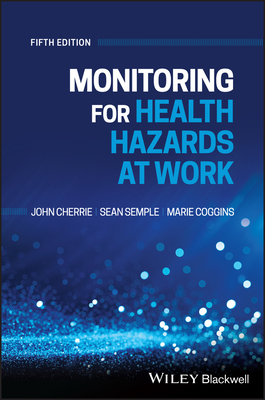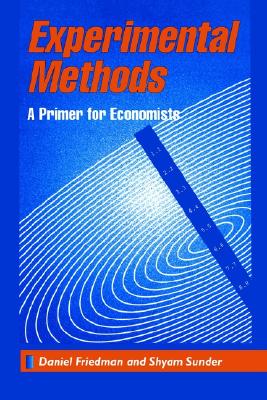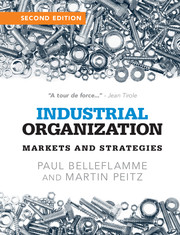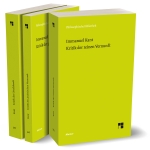图书简介
Monitoring for Health Hazards at Work remains the seminal textbook on measuring and controlling the risk of workplace exposure to physical, chemical, and biological hazards. Designed for students studying occupational hygiene and exposure science, this comprehensive and accessible volume provides step-by-step guidance on identifying hazards and quantifying their risks in various workplace environments. Complete with checklists and practical examples, the authors present clear explanations of all types of hazards that can arise in the workplace, including dust, particles, fibrous aerosols, gases, vapours, and bioaerosols. The fifth edition features revised material throughout, and remains an essential resource for students and professionals in occupational hygiene, reflecting global standards and recent developments in monitoring equipment, modelling methods, exposure assessment, and legislation on workplace safety. Several new or substantially revised chapters cover topics such as human biomonitoring, exposure modelling, hazardous substances, physical agents, evaluating ventilation, PPE, and other control measures Updated sections discuss the equipment currently available, the importance of risk communication, assessing dermal and inadvertent ingestion exposures, and more Examines common workplace comfort issues such as noise, vibration, heat and cold, and lighting Offers practical advice on conducting and presenting risk assessments and reports Discusses the future of the development and application of hazard measurement equipment and methods Monitoring for Health Hazards at Work, is required reading for students and professionals in occupational hygiene, environmental health and safety, occupational health and safety, and exposure science.
List of Figures Preface Acknowledgements Units and Abbreviations Part 1 Introduction Chapter 1 Occupational Hygiene and Risk Assessment 1.1 Introduction 1.2 Hazard and risk 1.3 Risk assessment 1.4 The stages of a risk assessment 1.4.1 Identify the hazard 1.4.2 Decide who might be affected and how 1.4.3 Evaluate the risks 1.4.4 Take preventative and protective measures 1.4.5 Record the significant findings 1.4.6 Review the assessment regularly and revise it if necessary 1.5 Who should carry out risk assessment? 1.6 References and further reading Chapter 2 Identifying Hazards 2.1 Introduction 2.2 Identifying hazards 2.3 Example of hazard identification 2.4 Conclusions arising from a hazard assessment 2.5 References and further reading Chapter 3 Exposure, Exposure Routes and Exposure Pathways 3.1 Introduction 3.2 Exposure routes 3.3 Exposure pathways 3.4 Measuring exposure 3.5 Biological monitoring 3.6 Exposure assessment: what the legislation requires 3.7 Conclusions 3.8 References and further reading Chapter 4 The Exposure Context 4.1 Context for measurement 4.2 Sources of hazardous substances 4.3 Dispersion through the workroom 4.4 Receptor 4.5 Jobs and tasks 4.6 Conclusion 4.7 References and further reading Chapter 5 Modelling Exposure 5.1 Introduction 5.2 Worst case models 5.3 Control banding and COSHH Essentials 5.4 Screening tools used for regulation of chemicals in Europe 5.5 The Advanced REACH Tool 5.6 Conclusions and prospects 5.7 References and further reading Chapter 6 Why Measure? 6.1 Introduction 6.2 Reasons for undertaking monitoring 6.2.1 To support a risk assessment 6.2.2 To assess compliance with an OEL 6.2.3 To make a comparison with existing data 6.2.4 To provide baseline information on the exposure distributions within a plant 6.2.5 Supporting information for registration submissions under the REACH Regulations 6.2.6 Containment capability studies 6.2.7 To underpin a research study 6.3 References and further reading Chapter 7 How to carry out a survey 7.1 Introduction 7.2 Planning the survey 7.3 Workplace monitoring 7.4 Monitoring strategies 7.5 Quality assurance and quality control 7.6 References and further reading Chapter 8 Analysis of Measurement Results 8.1 Introduction 8.2 Dealing with variability in measurement results 8.3 Summary statistics and data presentation 8.4 Testing compliance 8.5 Other software tools to aid data analysis 8.6 References and further reading Chapter 9 Introduction to Control 9.1 Introduction 9.2 Specific control measures 9.2.1 Elimination 9.2.2 Substitution 9.2.3 Total enclosure 9.2.4 Technological solutions 9.2.5 Segregation 9.2.6 Partial enclosure 9.2.7 Local ventilation 9.2.8 General ventilation 9.2.9 Personal protective equipment 9.3 The effectiveness of control measures 9.4 References and further reading Chapter 10 The importance of good records and how to write a survey report 10.1 Record, educate and influence 10.2 Measurement records 10.3 Survey reports 10.3.1 General principles of writing a good report 10.3.2 Report structure 10.3.3 Common pitfalls and administrative points 10.4 References and further reading Chapter 11 Risk Assessment 11.1 Introduction 11.2 Identify all hazardous substances or agents 11.3 Identify the likely levels of exposure 11.4 Identify all persons likely to be exposed 11.5 Assess whether the exposures are likely to cause harm 11.6 Consider elimination or substitution 11.7 Define additional control measures necessary to reduce the harm to acceptable levels 11.8 References and further reading Chapter 12 Risk Communication 12.1 Introduction 12.2 Risk perception 12.3 Trust 12.4 Principles of good Risk Communication 12.4.1 Know your constraints before you start 12.4.2 Define the role of the communicator 12.4.3 Research your audience 12.4.4. Timing 12.5 The Presentation 12.6 Communicating risk 12.7 Quantitative risk assessment to aid risk communication 12.8 References and further reading Part 2 Hazardous substances Chapter 13 An introduction to hazardous substances 13.1 Introduction 13.2 The complexities of modern workplaces 13.3 The top five hazardous carcinogens 13.4 Substances of concern for the respiratory system 13.5 Pesticides, pharmaceuticals and other biologically active substances 13.6 Organic chemicals 13.7 Summary 13.8 References and further reading Chapter 14 Dusts, Particles and Fibrous Aerosols 14.1 Introduction 14.2 Airborne particulate matter 14.3 Fibres 14.4 Measurement of airborne particulate and fibre concentrations 14.4.1 Filters 14.4.2 Filter holders and sampling heads 14.5 Measurement of flow rate 14.6 Pumps 14.7 Direct-reading aerosol monitors 14.8 Flow rate measurement using a rotameter or electronic flow calibrator by using the soap-bubble method 14.9 The measurement of inhalable airborne dust 14.9.1 Equipment required 14.9.2 Method 14.9.3 Calculations 14.9.4 Possible problems 14.10 The measurement of airborne respirable dust by using a cyclone sampler 14.10.1 Equipment required 14.10.2 Method 14.10.3 Calculations 14.10.4 Possible problems 14.11 The measurement of nanoparticles 14.12 The sampling and counting of airborne asbestos fibres 14.12.1 Equipment required for sampling 14.12.2 Method for sampling 14.12.3 Fibre counting and generating concentration data 14.12.4 Method of evaluation 14.12.5 Calculations 14.12.6 Possible problems 14.13 The choice of filter and filter holder to suit a specific dust, fume or mist 14.14 To trace the behaviour of a dust cloud by using a Tyndall beam 14.14.1 Equipment required 14.14.2 Method 14.15 References and further reading Chapter 15 Gases and Vapours 15.1 Introduction 15.2 Collection devices 15.2.1 Adsorption methods 15.2.2 Adsorbent tubes 15.2.3 Passive samplers 15.2.4 Colorimetric detector tubes 15.3 Containers 15.4 Direct-reading instruments 15.5 To measure personal exposure to solvent vapours using an adsorbent tube 15.5.1 Equipment required 15.5.2 Method 15.5.3 Calculations 15.5.4 Example 15.6 References and further reading Chapter 16 Bioaerosols 16.1 Introduction 16.2 Classification of microorganisms 16.3 Viruses 16.4 Bacteria 16.5 Moulds and yeasts 16.6 Allergens 16.7 Principles of containment 16.8 Monitoring bioaerosols 16.9 Measurement of endotoxins and allergens 16.10 Interpretation of sample results 16.11 References and further reading Chapter 17 Dermal and Inadvertent Ingestion Exposure 17.1 Introduction 17.2 Occupations where dermal exposure is important 17.3 Local and systemic effects 17.4 How do we know if dermal exposure is an issue? 17.5 What do we measure? 17.6 Methods for dermal exposure measurement 17.7 Sampling strategy 17.8 Liquids and solids 17.9 Biomonitoring and modelling of dermal exposure 17.10 From exposure to uptake 17.11 Controlling dermal exposure 17.12 Inadvertent ingestion exposure 17.13 References and further reading Chapter 18 Human Biomonitoring 18.1 Introduction 18.2 Selection of a suitable HBM method 18.3 Examples of HBM 18.4 Study protocols 18.5 Interpretation of HBM data 18.6 References and further reading Part 3 Physical Agents Chapter 19 An introduction to physical agents 19.1 Introduction 19.2 Physical agents in the workplace 19.3 Noise and vibration 19.4 Thermal environment 19.5 Ionising and non-ionising radiation 19.6 References and further reading Chapter 20 Noise 20.1 Introduction 20.2 Frequency 20.3 Duration 20.4 Occupational exposure limits 20.5 Pressure and magnitude of pressure variation 20.6 Equipment available 20.7 Sound level meters and personal noise dosimeters 20.8 Personal noise dosimeters 20.9 Calibration 20.10 Collecting noise measurements 20.10.1 Using an SLM 20.10.2 Results 20.11 To measure workplace noise using a PND 20.11.1 Using a PND 20.11.2 Results 20.11.3 Possible complications 20.12 To measure the spectrum of a continuous noise by octave band analysis 20.12.1 Collecting a spectrum of a continuous noise by octave band analysis 20.12.2 Results 20.13 To determine the degree of noise exposure and the actions to take 20.14 References and further reading Chapter 21 Vibration 21.1 Introduction 21.2 Vibration 21.3 Occupational exposure limits 21.4 Risk assessment 21.5 Measurements and measurement equipment 21.6 Hand-arm vibration measurement calculations 21.6.1 Reporting of vibration exposure data 21.7 Control of vibration 21.8 References and further reading Chapter 22 Heat and Cold 22.1 Introduction 22.2 Heat stress 22.3 Measurement equipment 22.3.1 Dry bulb thermometers 22.3.2 Wet bulb thermometers 22.3.3 Air speed 22.3.4 Globe thermometers 22.3.5 Integrating WBGT instruments 22.4 Personal physiological monitoring 22.5 Measurement of the thermal environment 22.6 Predicted Heat Strain Index, 22.7 Risk assessment strategy 22.8 Thermal comfort 22.9 Cold environments 22.10 To calculate the wind chill factor 22.10.1 Procedure 22.11 References and further reading Chapter 23 Lighting 23.1 Introduction 23.2 Lighting Standards 23.3 Equipment available 23.4 Calibration 23.5 To measure lighting 23.5.1 Aim 23.5.2 Equipment required 23.5.3 Method 23.5.4 Possible problems 23.5.5 Results and comparison with guidance 23.5.6 Reporting 23.6 Control 23.7 References and further reading Chapter 24 Ionising Radiation 24.1 Introduction 24.2 Ionising radiation 24.3 Background radiation 24.4 Basic concepts and quantities 24.5 Types of radiation 24.6 Energy 24.7 Activity 24.8 Radiation dose units 24.8.1 Absorbed dose and dose equivalent 24.8.2 To calculate dose equivalent 24.8.3 Dose rate 24.9 Dose limits 24.10 Derived limits 24.11 Procedures to minimise occupational dose 24.12 Personal dosimetry and medical surveillance 24.12.1 Monitoring of ionising radiation in work areas 24.12.2 Personal monitoring for external dose 24.12.3 Film badge dosimeter 24.12.4 Thermoluminescent dosimeter 24.12.5 Direct-reading monitors 24.12.6 Air monitoring 24.13 References and further reading Chapter 25 Non-Ionising Radiation 25.1 Introduction 25.2 Ultraviolet radiation 25.3 Visible and infrared radiation 25.4 Blue light 25.5 Microwaves, radiowaves and low frequency electric and magnetic fields 25.6 Lasers 25.7 References and further reading Part 4 Control of hazards Chapter 26 Assessing the effectiveness of exposure controls 26.1 Introduction 26.2 The effectiveness of control measures 26.2.1 Elimination and substitution 26.2.2 Ventilation and control measures at source 26.2.3 Personal protective equipment 26.3 Measuring exposure to assess the effectiveness of controls 26.4 References and further reading Chapter 27 Assessing local ventilation control systems 27.1 Introduction 27.2 Air pressure 27.2.1 Static pressure 27.2.2 Velocity pressure 27.2.3 Total pressure 27.3 Measurement equipment 27.3.1 Pressure-measuring instruments 27.3.2 Air velocity measuring instruments 27.3.3 Barometric pressure instruments 27.4 Ventilation measurement records 27.5 Measurement of air flow in ducts 27.5.1 Aim 27.5.2 Equipment required 27.5.3 Method 27.5.4 Calculation 27.5.5 Example 27.5.6 Possible problems 27.6 Measurement of pressure in ventilation systems 27.6.1 Aim 27.6.2 Equipment required 27.6.3 Method 27.6.4 Results 27.6.6 Possible problems 27.7 To measure the face velocity on a booth, hood, or fume cupboard 27.7.1 Aim 27.7.2 Equipment required 27.7.3 Method 27.7.4 Results 27.7.6 Possible problems 27.8 References and further reading Chapter 28 Personal Protective Equipment 28.1 Introduction 28.2 Components of an effective PPE programme 28.2.1 Assessment of risks and identification of where control is required 28.2.2 Implement all feasible controls 28.2.3 Identify who needs residual protection 28.2.4 Inform wearers of the consequences of exposure 28.2.5 Select PPE adequate to control residual exposure 28.2.6 Involve wearers in the PPE selection process 28.2.7 Match PPE to each individual wearer 28.2.8 Carry out objective fit-tests of RPE 28.2.9 Ensure that PPE does not exacerbate or create risks 28.2.10 Ensure PPE are mutually compatible 28.2.11 Train wearers in the correct use of their PPE 28.2.12 Supervise wearers to ensure correct use of PPE 28.2.13 Maintain PPE in efficient and hygienic condition 28.2.14 Inspect PPE to ensure it is correctly maintained 28.2.15 Provide suitable storage facilities for PPE 28.2.16 Record maintenance and inspection data 28.2.17 Monitor programme to ensure its continuing effectiveness 28.3 References and further reading Part 5 The future Chapter 29 Monitoring for hazards at work in the future 29.1 What the future holds for monitoring hazards at work 29.2 References and further reading Appendix Survey checklists Equipment Suppliers Chemical Analytical Services Index
Trade Policy 买家须知
- 关于产品:
- ● 正版保障:本网站隶属于中国国际图书贸易集团公司,确保所有图书都是100%正版。
- ● 环保纸张:进口图书大多使用的都是环保轻型张,颜色偏黄,重量比较轻。
- ● 毛边版:即书翻页的地方,故意做成了参差不齐的样子,一般为精装版,更具收藏价值。
关于退换货:- 由于预订产品的特殊性,采购订单正式发订后,买方不得无故取消全部或部分产品的订购。
- 由于进口图书的特殊性,发生以下情况的,请直接拒收货物,由快递返回:
- ● 外包装破损/发错货/少发货/图书外观破损/图书配件不全(例如:光盘等)
并请在工作日通过电话400-008-1110联系我们。
- 签收后,如发生以下情况,请在签收后的5个工作日内联系客服办理退换货:
- ● 缺页/错页/错印/脱线
关于发货时间:- 一般情况下:
- ●【现货】 下单后48小时内由北京(库房)发出快递。
- ●【预订】【预售】下单后国外发货,到货时间预计5-8周左右,店铺默认中通快递,如需顺丰快递邮费到付。
- ● 需要开具发票的客户,发货时间可能在上述基础上再延后1-2个工作日(紧急发票需求,请联系010-68433105/3213);
- ● 如遇其他特殊原因,对发货时间有影响的,我们会第一时间在网站公告,敬请留意。
关于到货时间:- 由于进口图书入境入库后,都是委托第三方快递发货,所以我们只能保证在规定时间内发出,但无法为您保证确切的到货时间。
- ● 主要城市一般2-4天
- ● 偏远地区一般4-7天
关于接听咨询电话的时间:- 010-68433105/3213正常接听咨询电话的时间为:周一至周五上午8:30~下午5:00,周六、日及法定节假日休息,将无法接听来电,敬请谅解。
- 其它时间您也可以通过邮件联系我们:customer@readgo.cn,工作日会优先处理。
关于快递:- ● 已付款订单:主要由中通、宅急送负责派送,订单进度查询请拨打010-68433105/3213。
本书暂无推荐
本书暂无推荐













